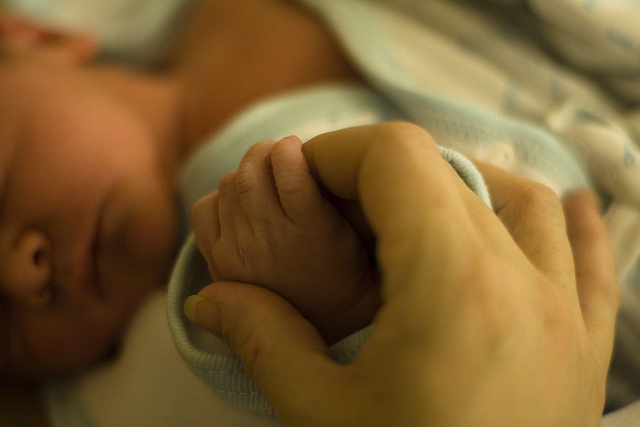
I have a vision for my future. I imagine being about 30 years old and deciding to start a family. I find out I’m pregnant and I’m really excited to start a family with my partner. I work at a great organisation that has some gender-equity policies in place, including a paid parental leave (PPL) scheme that offers eight weeks of paid leave at my current wage.
Under the national PPL scheme implemented by Labor in 2011, I would also be able to access 18 weeks of leave paid at the minimum wage, to complement my employer’s offering. This would mean I could have a total of 26 weeks with my baby, which, according to the World Health Organization, is the recommended amount of time for breastfeeding. 26 weeks is also not an unreasonably long amount of time for me to be able to spend with my newborn before having to either return to work or suffer a significant income penalty.
According to our Treasurer Joe Hockey, however, accessing both my employer’s leave scheme and the government’s PPL would be “basically fraud”. The government’s recently announced cut to PPL means that instead, I would have to choose between taking the 18 weeks of leave at the minimum wage or my employer’s scheme, and I couldn’t use both to make up a full 26 weeks.
Because that would be “double dipping” and this government won’t stand for unnecessary handouts.
This might sound like not that big a deal. So I have to go back to work two months earlier, and earn less during that period of time than my actual wage. What’s the big deal? At least I get something right?
But actually, this backflip on PPL highlights the crux of the problem when it comes to women’s workforce participation, and the bigger issue of the gendered wage gap.
The government’s approach to the scheme paints it as a purely economic issue; why should women get money from two different pools, when one could reasonably suffice? Why should women get access to a special concession when that same money could be reallocated somewhere else in the budget?
Seeing it as a simple reallocation of funds to make the system more “fair” avoids the brutal fact that since entering the workforce, women have been expected to fit the biological fact of childbirth into a system of work that is based in patriarchy.
Our norms of employment, full-time work and economic participation are all structured for a workforce comprising primarily of men who do not need to take a significant period of time out of work to birth and breastfeed children. These norms are also based on the assumption that only women can raise children, and that by taking time off work for pregnancy and childbirth women are making a “choice” between starting a family and furthering a career.
This is incredibly unfair as it excludes women from a right to equal workforce participation and access to reasonable concessions that counteract the impact of the gender wage gap. A wage gap which we know is a direct result of workplace inflexibility, feminised industries which typically pay less, and a lack of women in leadership that can be linked to society’s expectations of women in their roles as mothers.
The tragedy is that Labor’s existing PPL scheme, whilst it has its own flaws, was designed to be as equitable as possible and to encourage workplaces to implement more gender-equality measures in order to encourage more women to return to work after giving birth.
Under the new scheme, with women characterised as selfish “double-dippers”, it’s difficult to see Australian workplaces becoming more fair and equitable anytime soon.
—
Zoya Patel is a writer, editor, founder of Feminartsy, and a Right Now columnist. She tweets @zoyajpatel
Feature image: Bridget Coila/Flickr
This column has been assisted by the Australian Government through the Australia Council, its arts funding and advisory body.

